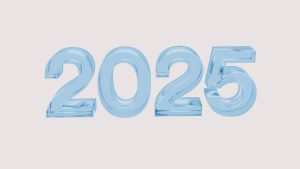No products in the cart.
The Critical Importance of Learning Velocity in Modern Careers
Learning velocity is the new frontier in career development. Discover how to accelerate your skills and stay ahead in a competitive job market.
San Francisco, USA — In an age defined by rapid technological advancement and shifting job landscapes, the speed at which we learn is becoming paramount. While knowledge remains important, the ability to acquire and apply new skills quickly—what experts are calling “learning velocity”—is emerging as a crucial asset in today’s workforce.
Learning velocity encompasses more than just the pace of education; it reflects a mindset that embraces continuous improvement and adaptation. This concept resonates particularly with younger generations stepping into the professional world. For them, the challenge is not only to keep up with the ever-evolving demands of their roles but also to outpace their peers by mastering new competencies at an unprecedented rate.

The rise of the gig economy and the prevalence of remote work have further intensified this need for speed. A 2022 study by the World Economic Forum found that 50% of employees will need reskilling by 2025 to remain relevant in their jobs[1]. This staggering statistic highlights the urgency for individuals, especially those aged 16 to 35, to cultivate a proactive approach to learning.
 Education Innovation
Education InnovationMicrolearning, Mega Impact: How Bite-Sized Lessons Are Reshaping Education
Microlearning delivers bite-sized lessons designed for better retention and engagement, making it a game-changer in education and corporate training. Learn…
But what does it mean to enhance your learning velocity? It begins with a commitment to lifelong learning. Traditional education systems often emphasize rote memorization and standardized testing, but the new paradigm focuses on adaptability and practical application. Programs that promote critical thinking, creativity, and problem-solving are essential in developing a workforce ready to tackle tomorrow’s challenges.
Programs that promote critical thinking, creativity, and problem-solving are essential in developing a workforce ready to tackle tomorrow’s challenges.
Take, for instance, the story of Maria, a 27-year-old software developer from Berlin. After finding herself stagnating in her role, she decided to invest in her learning velocity by enrolling in online coding boot camps. Within a few months, she was not only proficient in several new programming languages but also landed a position at a leading tech startup. Maria’s experience exemplifies how embracing a dynamic approach to skill acquisition can lead to tangible career advancements.
Moreover, technology plays a crucial role in facilitating this accelerated learning. Platforms like Coursera and Udemy offer a plethora of courses that cater to diverse interests and skill levels. Virtual reality (VR) and augmented reality (AR) are also making waves in educational settings, creating immersive environments where learners can practice skills in real-time scenarios. This technology-driven shift allows individuals to learn by doing, which is often more effective than passive learning methods.
However, the emphasis on learning velocity also brings forth challenges. The pressure to constantly acquire new skills can lead to burnout, especially among younger workers who are already grappling with job insecurity and the rising cost of living. Finding a balance between skill enhancement and mental well-being is vital. Organizations must foster a culture that not only encourages learning but also recognizes the importance of downtime and self-care.
 Finance
FinanceWhy Smart Saving Habits Are Essential for Your Future in 2025
Explore why developing smart saving habits is essential for financial success in 2025 and beyond. Here's how to prepare.
Read More →From a corporate perspective, companies that prioritize learning velocity stand to benefit significantly. Research indicates that organizations with a strong learning culture outperform their competitors in terms of employee engagement and retention[2]. For example, Google has long been recognized for its commitment to employee development, offering various programs to help workers enhance their skills. This investment not only cultivates a more competent workforce but also creates a loyal employee base.
As we look ahead, the concept of learning velocity will likely become even more integral to career success. The rapid pace of change means that today’s skills may quickly become obsolete. Therefore, cultivating an agile mindset—one that thrives on continuous learning and adaptability—will be crucial. Individuals need to embrace the idea that learning is not a one-time event but a lifelong journey.
For example, Google has long been recognized for its commitment to employee development, offering various programs to help workers enhance their skills.
So, how can you enhance your learning velocity? Start by setting clear, achievable goals for skill acquisition. Identify areas where you want to grow and seek out resources that align with those needs. Engage in communities, both online and offline, where you can share knowledge and experiences. Remember, learning is not a solitary endeavor; collaboration can enhance your understanding and retention of new skills.
 Career Development
Career DevelopmentTelkom SA Launches Graduate Internship Programme for 2025
Telkom SA's Elevate Graduate Internship Programme 2025 aims to empower young professionals in the Global South with critical skills and…
Read More →Ultimately, the future of work will favor those who can pivot and adapt swiftly. By focusing on learning velocity, you not only prepare yourself for the challenges of tomorrow but also position yourself as a leader in your field. As the saying goes, “The only constant in life is change.” Embracing that change through accelerated learning will be the key to thriving in an unpredictable world.











